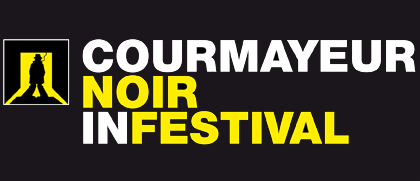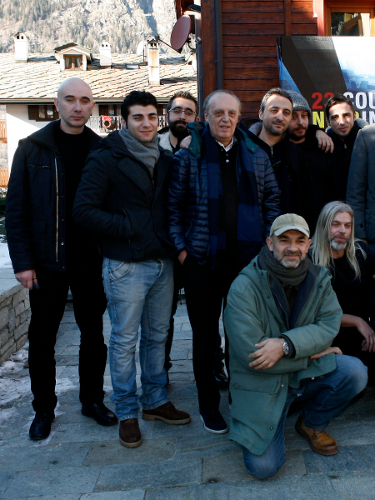Vedo Nero
The hopes of Italy’s new horror cinema
The hopes of Italy’s new horror cinema
"Working with a lot or a little money makes no difference. It’s all about knowing how to tell a story," John Carpenter once said. This could be a good starting point for relating the ups and downs of the new "factories" of Italian horror cinema, at the heart of the third Vedo Nero conference, promoted by the Istituto Luce Cinecittà, which from its first edition has aimed to transform the festival, as Giorgio Gosetti says, "into a meeting platform for people of different fields united by the same passion, which mixes ideas and stimuli to create positive confrontation and dialogue."
The artistic and production underbrush of this world is made up young, sometimes very young, directors and technicians, who love the genre and will go to considerable lengths to make their movies. In the presence of Dario Argento and under the supervision of Federico Greco, the more than 18 filmmakers, producers and actors at the event spoke critically and positively about their work to festival audiences.
The most macroscopic element to emerge from all the discussions was how much easier it is for Italian horror films to find distribution abroad, in countries such as the US, Canada, Germany and South America. "In Italy," says producer Claudio Bronzo, most genre and sub-genre films like mockumentaries have practically no market. Our Gerber Syndrome came out in the United States and Canada before it came out in Italy. Only in the wake of our international success were we able to release it here as well."
Director Domiziano Delvaux Cristopharo also spoke of a project of his that was ignored for five years in Italy and produced in just two months in the US, alluding to the fact that the genre receives virtually no attention in Italy but is made very frequently abroad. His sentiments were echoed by 25-year-old filmmaker John Real, who says that while 40-year-old directors are still considered young in Italy, "in the United States, people my age are distributing independent films." Producer Manuela Cacciamani also spoke of how Neverlake, presented at the festival in the Events sections, was sold to Germany, where "in June it will also be available in 3D. The fact that a company invested three times the film’s budget to bring it to theatres in 3D makes me very happy."
The second general trend, essentially a defense of the dignity of those making horror films, was eloquently summed up by producer-distributor Giovanni Costantino: "The noir comedy that we produced a few years ago, Falene, cost less than €50,000, but we had incredible artists and technicians. These films are investments of ‘talent,’ they have a value in and of themselves different than what is spent to make them, an element often ignored by critics who only focus on their low budgets." Edo Tagliavini agrees, and in speaking about his Blood Line said: "We were picked up for distribution in Germany and the United States, and the film cost us €70,000 to make. But this number doesn’t indicate the actual value of the film, that is, the personal and professional investments of people who often worked for free or for ridiculously low wages."
To return to Carpenter’s abovementioned quote, the ability to tell a story and the skill to do so are not qualities lacking among Italian artisans, and the success these films have abroad is a glaring example of that. The genre is alive and kicking, it’s continuously experimenting and innovating, as well as earning acclaim from an ardent audience fan base, as proven by the success of Italian-Greek actress Crisula Stafida who thanks to, among others, Federico Zampaglione’s horror film Tulpa, has won herself the title of scream queen, which she happily accepts. In Courmayeur she received the FilmHouse Award, which is given each year to an emerging protagonist of Italian cinema and was presented by Luca Svizzeretto.
The difficulties in producing these films, nevertheless, continue at times to be insurmountable obstacles that exhaust even the most dedicated directors; demoralize exhibitors, who are ruled by vicious circles of compromises imposed by large distribution circuits; and force independent projects to work on micro budgets that debase the work of all those involved. These aren’t exactly small problems in such a competitive field in which, in the face of the massive amount of analogous films coming mostly out of the US, Italian films risk becoming an invisible minority.
It’s true, therefore, as producer Luca Boni says: "Ideas are important, but you need quality. It’s not true that you make films for €2,000. For the last three years we’ve been piping money from abroad into Italy, you need to have a more entrepreneurial mentality." So, if as Cacciamani says, "we need to take advantage of all available technologies, responding to the needs of the market," one possibility is to create an Italian entrepreneurial context that recognizes the value of horror films, and gives them economic and technical resources that can win over the market competition and offer alternatives to the flow of similar products coming from abroad.
To that end, the web could be a useful tool for the cause but, as Tagliavini points out, it’s a double-edged sword, often used to low-quality product and does not guarantee economic returns comparable to those of traditional films. Even festivals and certain distribution channels, says Costantino, are sometimes geared towards creating media events that give a lot of visibility to films that then monopolize the market, undermining smaller but no less valid works.
There are no easy or immediate solutions, especially in a country like Italy, an archipelago of independent horror filmmakers all trying to find their own path and affirm their creative and qualitative qualities. Only recently have they begun to form a united front so as to aspire to something more than mere survival. A first request has already, and pretty much unanimously, emerged from various speakers at the conference, with Costantino and Boni essentially acting as the spokesmen. They would like the support of great filmmakers of the past, like Dario Argento, so that they might be the ferrymen of that experimental, inventive, original and unpredictable horror cinema for which Italy was so famous until the early 1990s. In the meantime, the new Italian protagonists of horror await only that chance to find their voices, as well as to gain respect and dignity from audiences no longer used to considering the Italian horror genre great.


